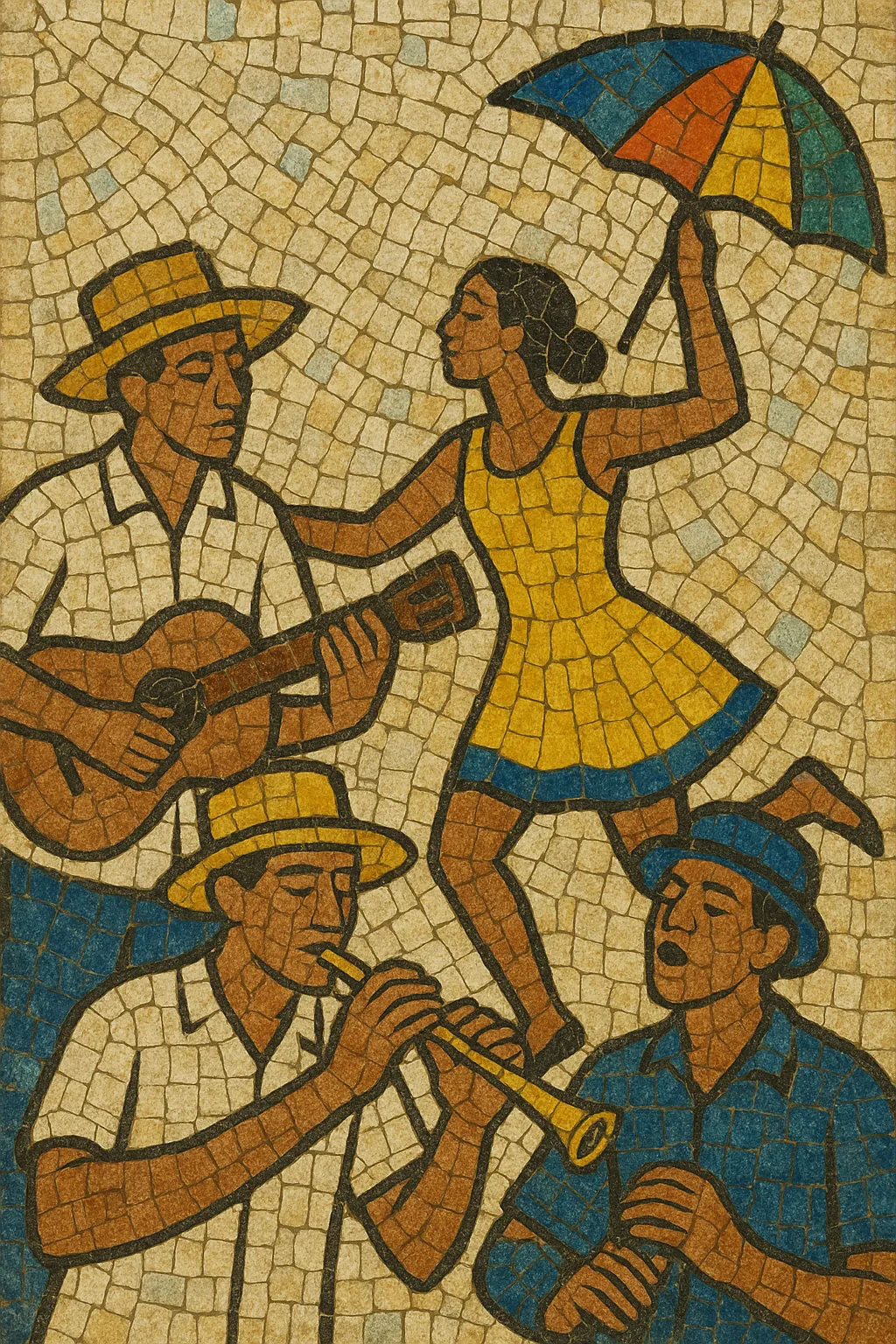Frevo de bloco is a lyrical, choral-oriented branch of Pernambuco’s carnival music, developed within Recife’s traditional blocos líricos (lyric street associations). Unlike the brassy, virtuosic frevo de rua, frevo de bloco favors the timbre of an “orquestra de pau e cordas” (woodwinds and strings) and lush vocal choirs, delivering melodic frevos that can be sung collectively in procession.
Its feel is still in lively 2/4 like other frevos, but at a more moderate tempo that supports intricate melodies, harmonic richness, and nostalgic, poetic lyrics about love, the city, and the spirit of carnival. The result balances pageantry and tenderness: music that is unmistakably for the street yet dressed in the colors of salon song and choro-like sophistication.
Frevo de bloco emerged in Recife and Olinda as carnival associations sought a sung counterpart to the blazing, instrumental frevo de rua. By the 1920s—coinciding with the rise of early blocos líricos such as Bloco das Flores—the style took shape around choirs and an “orquestra de pau e cordas,” blending street procession energy with the melodic-harmonic language of choro and modinha. The characteristic 2/4 frevo pulse remained, but tempos moderated to make room for lyrical refrains and collective singing.
Composers and maestros including Nelson Ferreira, Capiba, and Edgard Moraes codified frevo de bloco’s identity through sophisticated arrangements, evocative texts, and emblematic pieces that became seasonal anthems. The emergence of dedicated ensembles and choirs (e.g., Coral Edgard Moraes) and traditional blocos líricos cemented an annual cycle of parades and serenade-like presentations during carnival, shaping a repertoire that evoked both festivity and saudade.
While frevo’s brass-driven variants spread nationally, frevo de bloco preserved the lyrical, choral strain of Pernambuco’s carnival. Groups such as Bloco da Saudade revitalized the tradition with new compositions and archival care, and the style benefited from frevo’s recognition by UNESCO as Intangible Cultural Heritage (2012, encompassing the frevo cultural complex). Today, frevo de bloco continues to thrive in Recife’s carnival, recordings, and concert presentations, influencing Brazilian popular song aesthetics and keeping a living bridge between street celebration and refined songcraft.
Use an “orquestra de pau e cordas” palette: strings (violins, viola, cello, contrabaixo), woodwinds (flutes, clarinets), and light rhythm (pandeiro, caixa/tarol, and discreet percussion). Add a choir (often mixed SATB) or unison/close-harmony group for refrains and call-and-response with the crowd.
Write in lively 2/4 with the characteristic frevo propulsion, but at a moderate tempo compared to frevo de rua. Keep the marching feel clear (accented offbeats and syncopations), yet leave space for vocal phrasing and choral articulation.
Craft singable, arching melodies with memorable refrains. Favor major keys and bright modal colors, but balance cheer with a touch of saudade through secondary dominants, brief modulations, and chromatic inner lines. Choro-like voice-leading and counter-melodies in woodwinds and strings enrich the texture.
Common forms are verse–refrain or AABA, designed for group singing. Lyrics often celebrate Recife/Olinda, carnival imagery, romance, and memory. Employ poetic, evocative language and inclusive refrains that invite audience participation.


